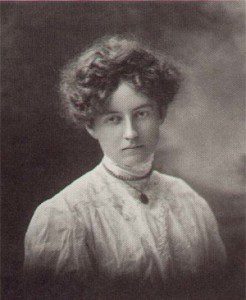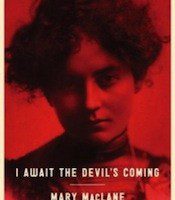“One good thing about being a woman,” writes Sheila Heti in How Should a Person Be?, “is we haven’t too many examples yet of what a genius looks like.” Heti’s character is being facetious, or maybe not, it’s hard to tell, but in any case, she speaks to the task shared by all young artists of ambition: to identify the precedents that will become her interlocutors, rivals, and models. Ambition craves a hero.
Or heroine, as the case may be. Finding specifically women progenitors requires a bit of extra effort—Warhol or Kerouac or Nietzsche are readier-at-hand than Kathy Acker or Claude Cahun or Agnes Martin—but, thanks to the Internet, feminism, and other cultural shifts, no one comes up empty-handed. Rag-picking through the history of the arts now turns up dozens of intriguing feminine protagonists, many of them radicals and outliers, reputations teetering at the edge of critical oblivion, women who made their own way in the world, consequences be damned.
Add to this group Mary MacLane, author of I Await the Devil’s Coming. The book is a memoir published in 1902 by a precocious nineteen-year old from the mining outpost of Butte, Montana, and recently reissued with a spirited introduction by Jessa Crispin. A diaristic report of MacLane’s state of mind over the course of three months, I Await the Devil’s Coming is considered the first confessional memoir ever published and the first iteration of blog-style writing. It remains a remarkable exemplar of the form—honest, intelligent, and committed to self-interrogation. Rather than recoil from her own emotional intensity, MacLane describes it in detail and prods it for meaning.
As is clear from the first page, MacLane’s ambitions outstrip her circumstances. “I am a genius—a genius—a genius,” she writes, but she is a lonely genius, stifled by her pedestrian family and a frontier community with more “constipated dressmakers” than kindred spirits. Her single friend is a former teacher whom she now rarely visits, and her sole amusement is wandering the empty plains. When she sees the family toothbrushes lined up in the bathroom, “two heavy leaden hands lay hold of my life and press, press, press.”

MacLane is addicted to hyperbole, but she loves and hates in such unexpected ways the tic is more amusing than tiresome. She rejoices in her similarity to Napoleon, her “perfect liver,” and her appreciation for porterhouse steak. When she feels low, she compares herself to the black mud of a sow’s pen. Equally pleasurable are MacLane’s more subtle observations, as when she notices that a tone of falseness creeps into her writing, even though she has no intention of being false.
In no time at all, the reader joins the heroine in wondering, Where did this woman come from? How does an isolated teenager in the Midwest at the turn of the last century (even a woman so well educated as MacLane seems to have been), come to philosophize about her attraction to other women? To form an opinion of marriage as “a miserable, petty, paltry excuse for living together”? To fantasize about being ravished by the Devil? Or, perhaps most outré, to celebrate having such a fine, young, lithe body as she.
I Await the Devil’s Coming catapulted MacLane to a degree of fame for which she hoped but probably never expected. With the sale proceeds, she moved to Chicago and then Greenwich Village, where she found her tribe and published several subsequent books. She also wrote and starred in a film based on her life, now lost, but memorably titled Men Who Have Made Love to Me. Her antics routinely made national headlines, as in this lead from the San Francisco Call in 1904: “Hitherto [MacLane] has declared all men hateful to her, particularly young men, who, she declared, bored her and were puppies […] but she has finally confessed that she likes two of them.”
Given the microphone of national attention, MacLane continued in the bombastic style of her teenage self. As she wrote in 1917, “I myself am the most immediate potent topic I can find in my knowledge to write on; the biggest, the littlest, the broadest, the narrowest, the loveliest, the hatefulest, the most colorful, the most drab, the most mystic, the most obvious, and the one that takes me furthest as a writer and as a person.”
Perhaps. More likely is that the mode which first allowed MacLane to find a voice—a hyper-attenuation to her own subjectivity—had became a trap. In a different time and place, a sense of destiny like hers might have fueled grand achievement. MacLane, however, got stuck. Bound for greatness with nowhere to go, she was left with the consolation prize of media spectacle. In other words, MacLane’s ambition was not a harbinger of accomplishment to come, but the only accomplishment that she was permitted.
Audiences who were first shocked by MacLane’s revelations soon turned mocking. The New York Press, for instance, thought it amusing to render the children’s poem, “Mary Had a Little Lamb” in MacLane-style verse:
The lamb? Fool. It is no genius.
It will be slain ere long.
And I? I must live on.
I will torture that lamb,
For I am bad. And like the eyes of the Devil,
It follows me everywhere!”
It was a cruel joke that spelled the end of MacLane’s fame. She died in obscurity in 1929.




